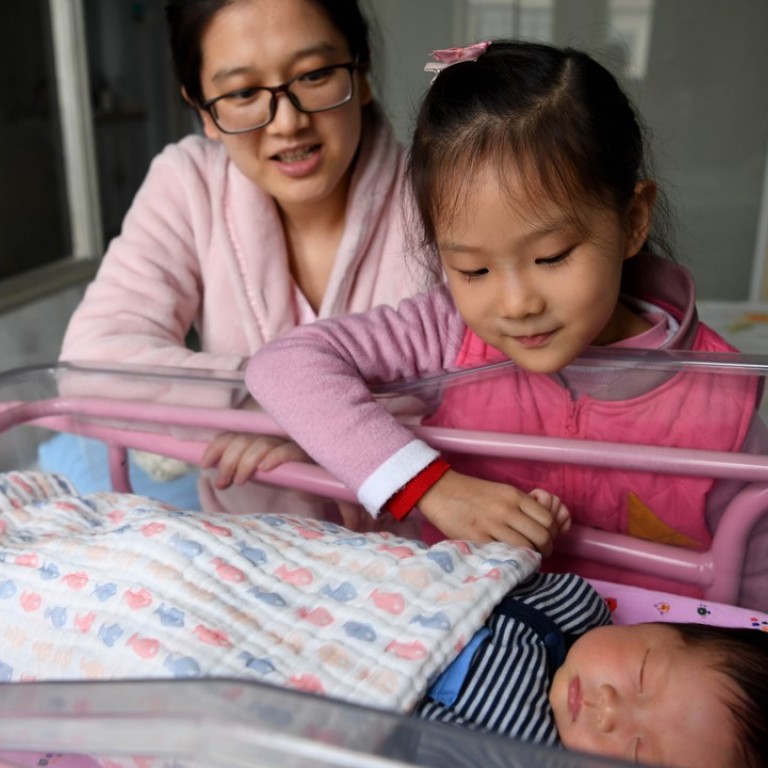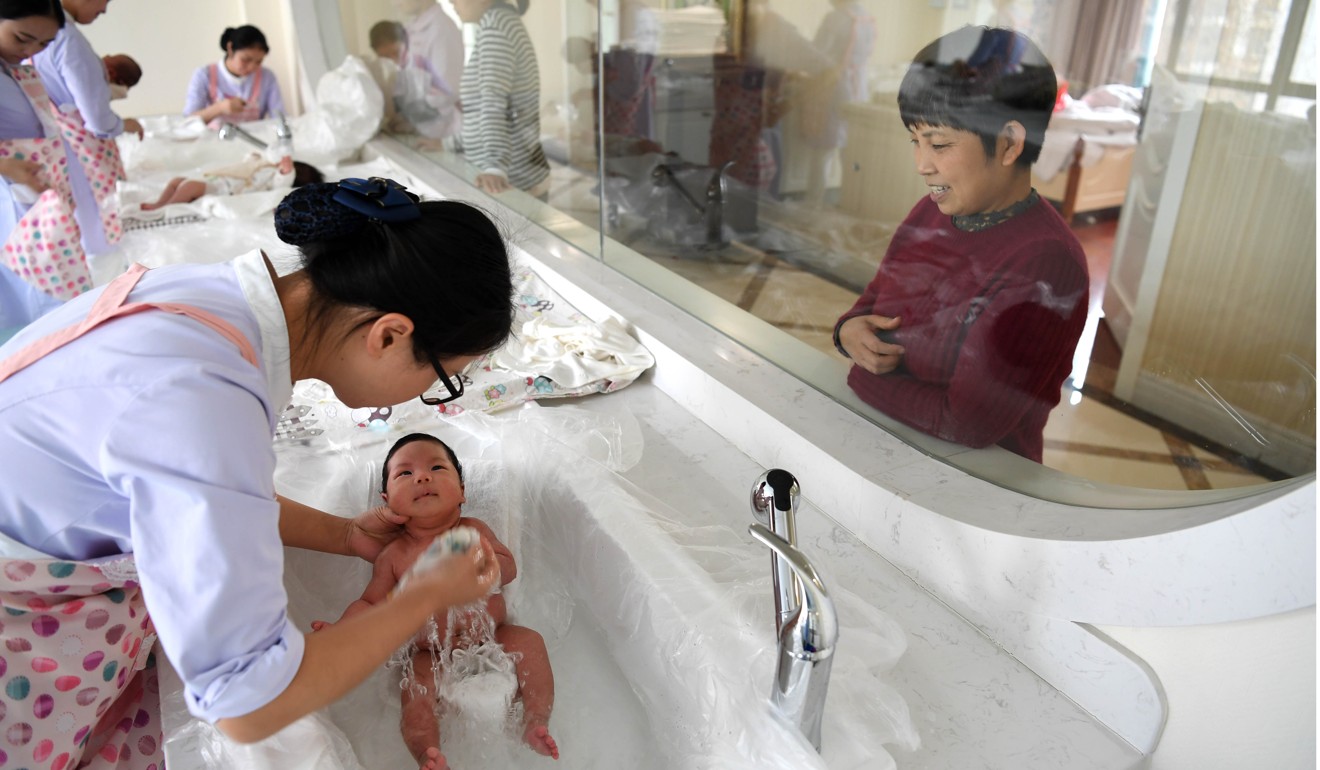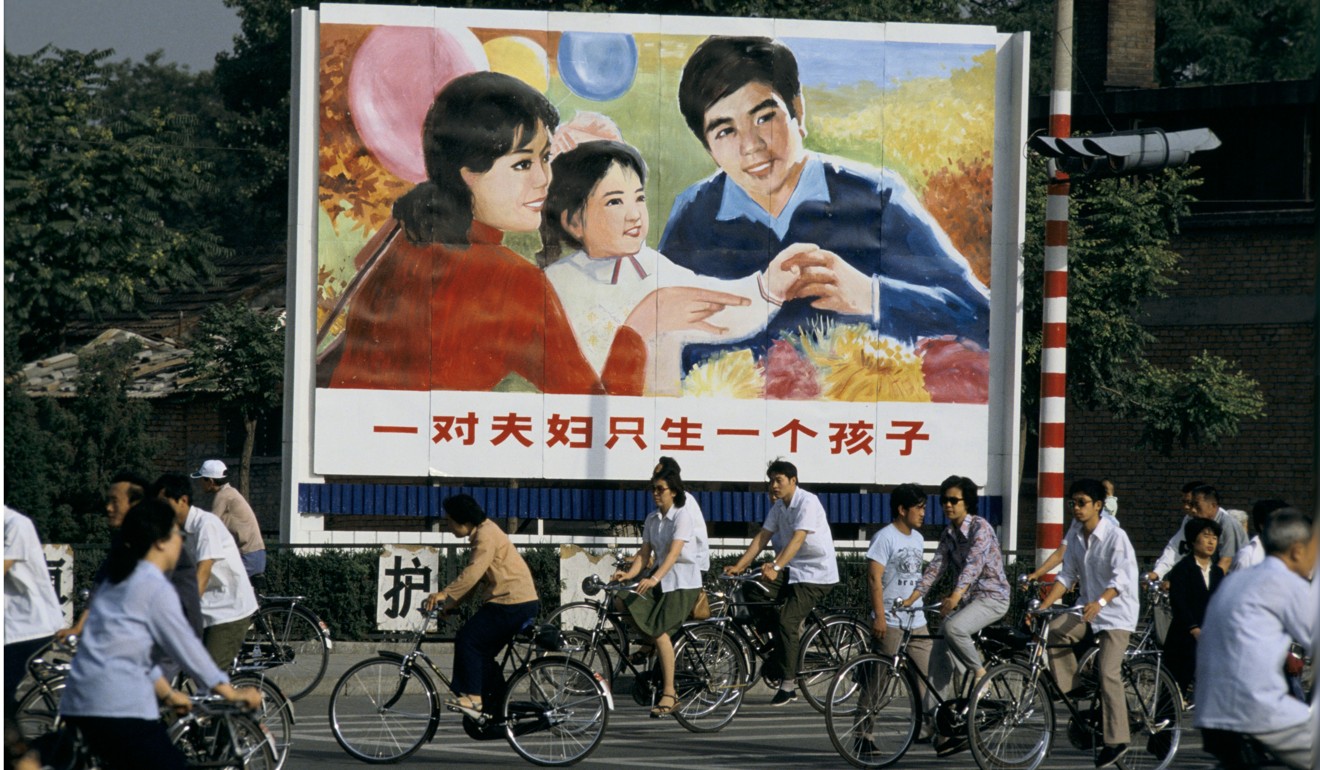
Why China must wake up to demographic reality
Country’s population is ageing more quickly than the authorities imagined, with shortages of workers, students and babies set to worsen alarmingly
China’s headline economic growth figure for 2017, released last week, may have confirmed its economic resilience and prospects for dethroning the US as the world’s biggest economy. But another number – for births – is casting a shadow over its long-term growth potential.
According to the National Bureau of Statistics, there were 17.23 million babies born in China in 2017, a drop of 630,000 from a year earlier. That is a lot less than China’s National Commission of Health and Family Planning had expected, having estimated that the new two-child policy would push the number of births to more than a 20 million last year, even in a “low-birth scenario”.
The commission was wrong because Chinese couples, just like their counterparts in Japan and Germany, have become less willing to have babies as their income has risen, regardless of whether bigger families are allowed or even encouraged.
The conventional wisdom, that China, the world’s most populous country, has too many people, is no longer valid. The harsh new reality faced by the authorities in Beijing is that China’s population is ageing at a faster rate than previously imagined and the country’s shortages of workers, students and babies are set to worsen at an alarming rate.
Such demographics are set to have a far-reaching and long-term impact on Chinese economic and social development, with recent reports about pension fund deficits in a growing number of Chinese provinces just the tip of an iceberg of trouble.

First of all, while China’s economic growth miracle in the past four decades had many underlying factors, a key one was its huge labour force. Hundreds of millions of Chinese workers left their rural homes to work in factories and construction sites, contributing to China’s economic boom and rapid urbanisation.
China’s notorious one-child policy was implemented in tandem with its economic liberalisation, which magnified the so-called “demographic dividend”, namely a rising share of labour in the overall population. On the one hand, “baby boomers” born in 1950s and 1960s were mobilised into efficient production, while on the other they were allowed to have only one child, making child-rearing less of a priority.
However, as China’s labour force ages and the supply of new labour dries up, the burden on the pension system and households – and indeed the whole nation – is becoming increasingly heavy. Unfortunately, China’s preparations for an ageing society were insufficient, as can seen from the lack of elderly care facilities to its outdated birth-control policies.
Secondly, the median age in China last year was estimated at about 37.4, or about 10 years older than that in India, which some estimates say could already have the world’s biggest population. China’s age structure is going to turn against property developers and merchants alike as a greying population is set to have less demand for housing, education, entertainment and even consumer products.
The Chinese economy was particularly strong in the past two decades, partly thanks to the coming of age of those born in 1970s and 1980s, many of whom settled down in towns and cities. However, that blessing evaporated quickly as births in China started to shrink.

In 1987, the number of births was 25.3 million – 8 million more than last year. That means that by 2047 there will be 8 million fewer Chinese consumers aged 30 than there are now.
To be sure, a big, young population is no guarantee of economic success, but it will be unrealistic to seek economic growth when there are not enough workers, not enough consumers and way too many pensioners.
The Chinese leadership headed by President Xi Jinping, who has only one daughter according to his official biography, has realised that the country needs more babies.
Beijing ended the one-child policy at the end of 2013, allowing couples in which at least one partner was an only child to have a second baby. Two years later it decided to let all couples have two babies.
However, those relaxations proved too mild and too small.
The traditional Chinese idea of “the more, the merrier” when it came to children was completely uprooted by economic development and the ruthless implementation of the one-child policy. For young Chinese couples in cities and villages alike, one child is now the default, two is extra, and three is craziness. In fact, double income no kid (DINK) families are more common in China than those with three children or more.
The Chinese government must wake up to the country’s demographic reality and adopt policies to encourage child birth, such as direct subsidies for newborn babies and personal income tax deductions for parents.
It is absurd to cap births when it’s obvious that more babies are needed. That absurdity must be ended as quickly as possible.

